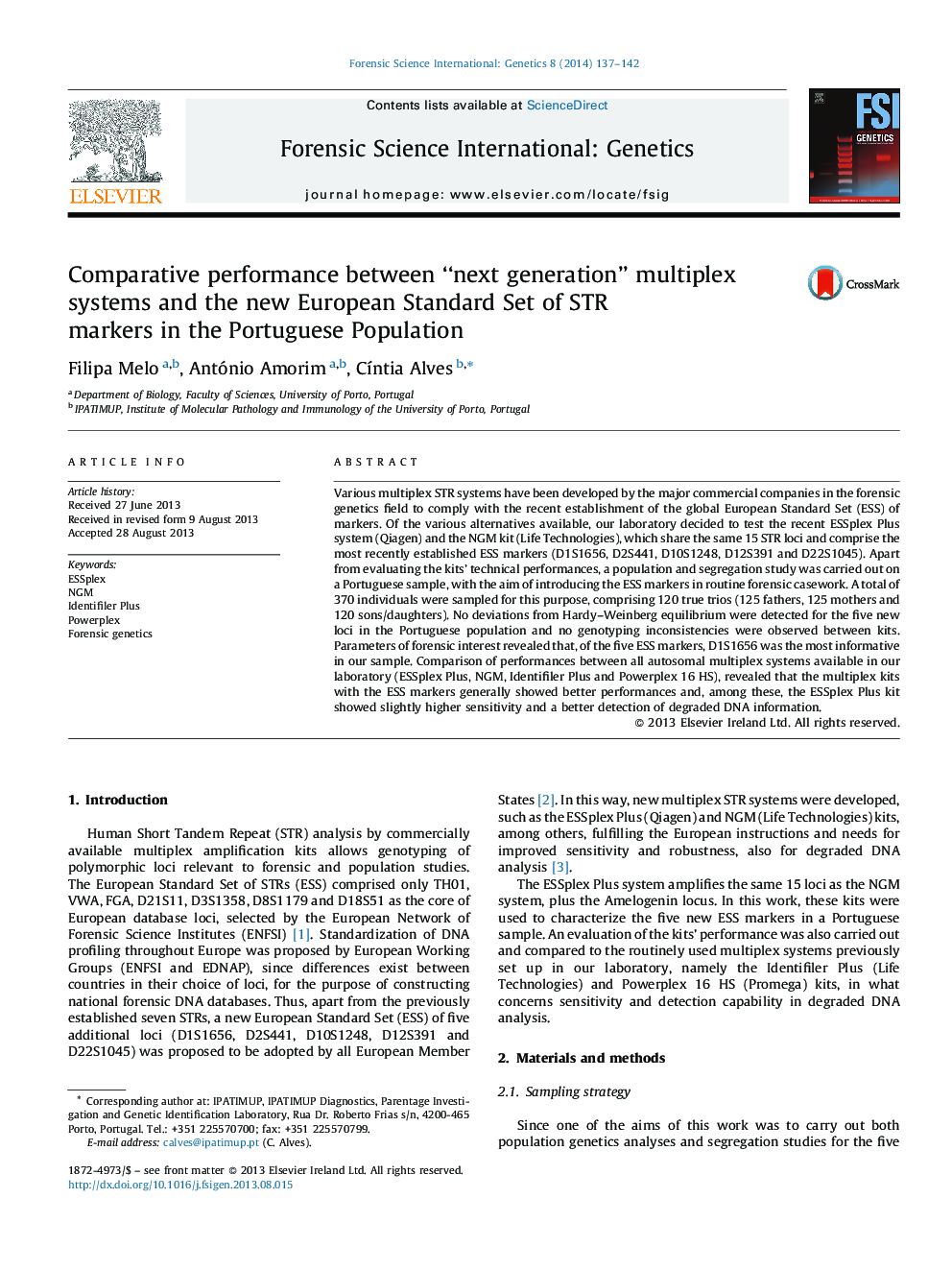| Article ID | Journal | Published Year | Pages | File Type |
|---|---|---|---|---|
| 98773 | Forensic Science International: Genetics | 2014 | 6 Pages |
Various multiplex STR systems have been developed by the major commercial companies in the forensic genetics field to comply with the recent establishment of the global European Standard Set (ESS) of markers. Of the various alternatives available, our laboratory decided to test the recent ESSplex Plus system (Qiagen) and the NGM kit (Life Technologies), which share the same 15 STR loci and comprise the most recently established ESS markers (D1S1656, D2S441, D10S1248, D12S391 and D22S1045). Apart from evaluating the kits’ technical performances, a population and segregation study was carried out on a Portuguese sample, with the aim of introducing the ESS markers in routine forensic casework. A total of 370 individuals were sampled for this purpose, comprising 120 true trios (125 fathers, 125 mothers and 120 sons/daughters). No deviations from Hardy–Weinberg equilibrium were detected for the five new loci in the Portuguese population and no genotyping inconsistencies were observed between kits. Parameters of forensic interest revealed that, of the five ESS markers, D1S1656 was the most informative in our sample. Comparison of performances between all autosomal multiplex systems available in our laboratory (ESSplex Plus, NGM, Identifiler Plus and Powerplex 16 HS), revealed that the multiplex kits with the ESS markers generally showed better performances and, among these, the ESSplex Plus kit showed slightly higher sensitivity and a better detection of degraded DNA information.
